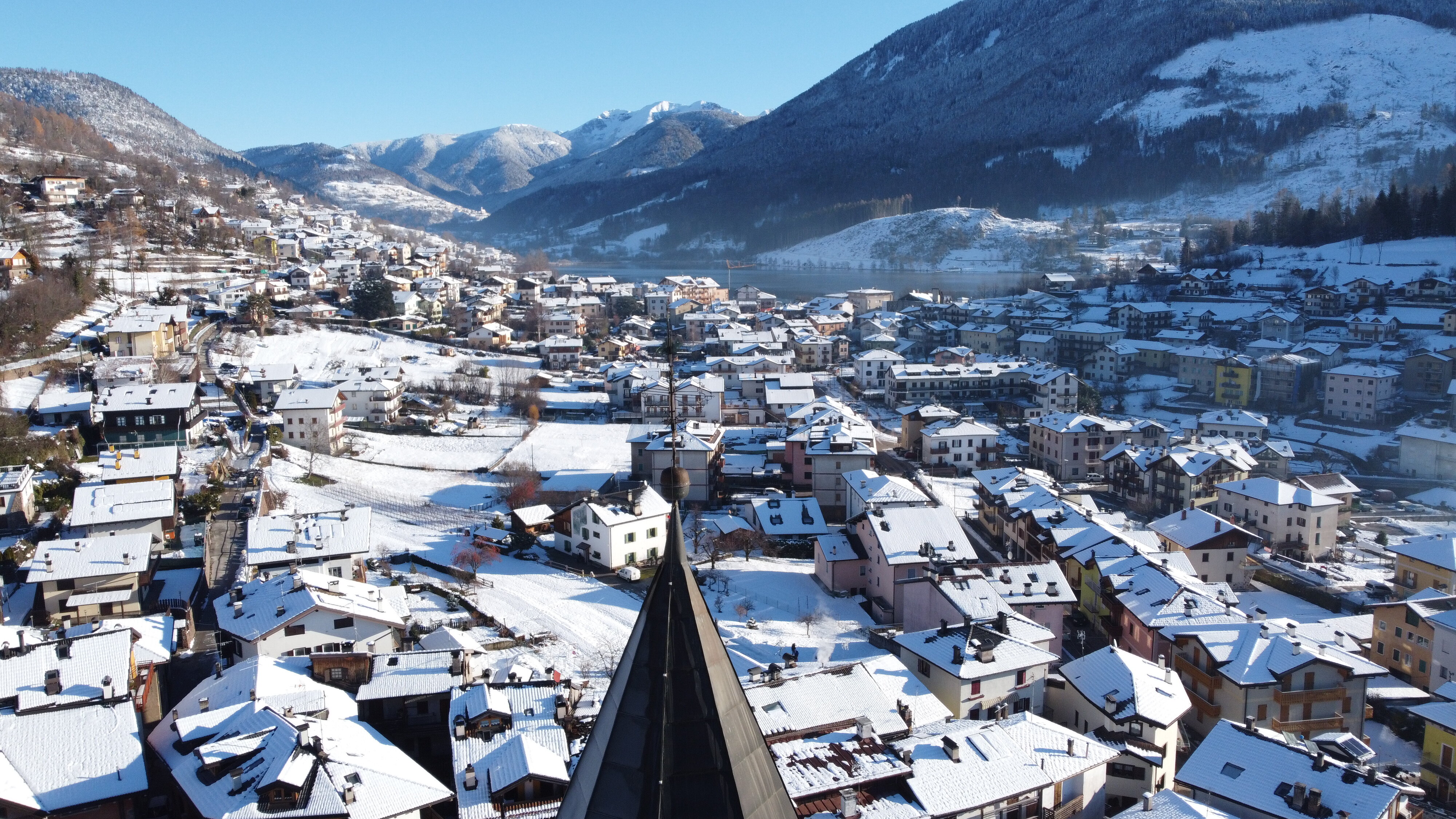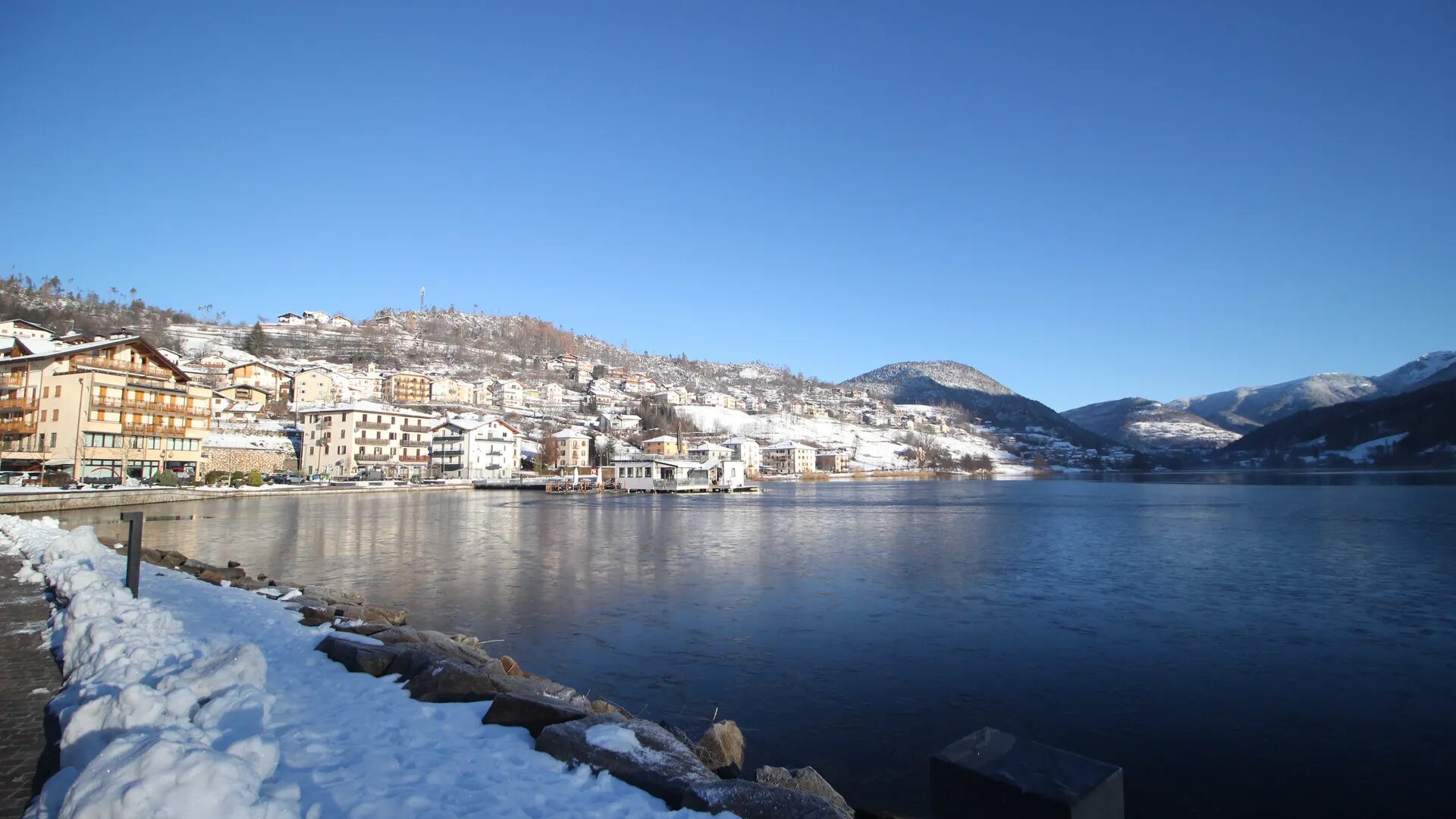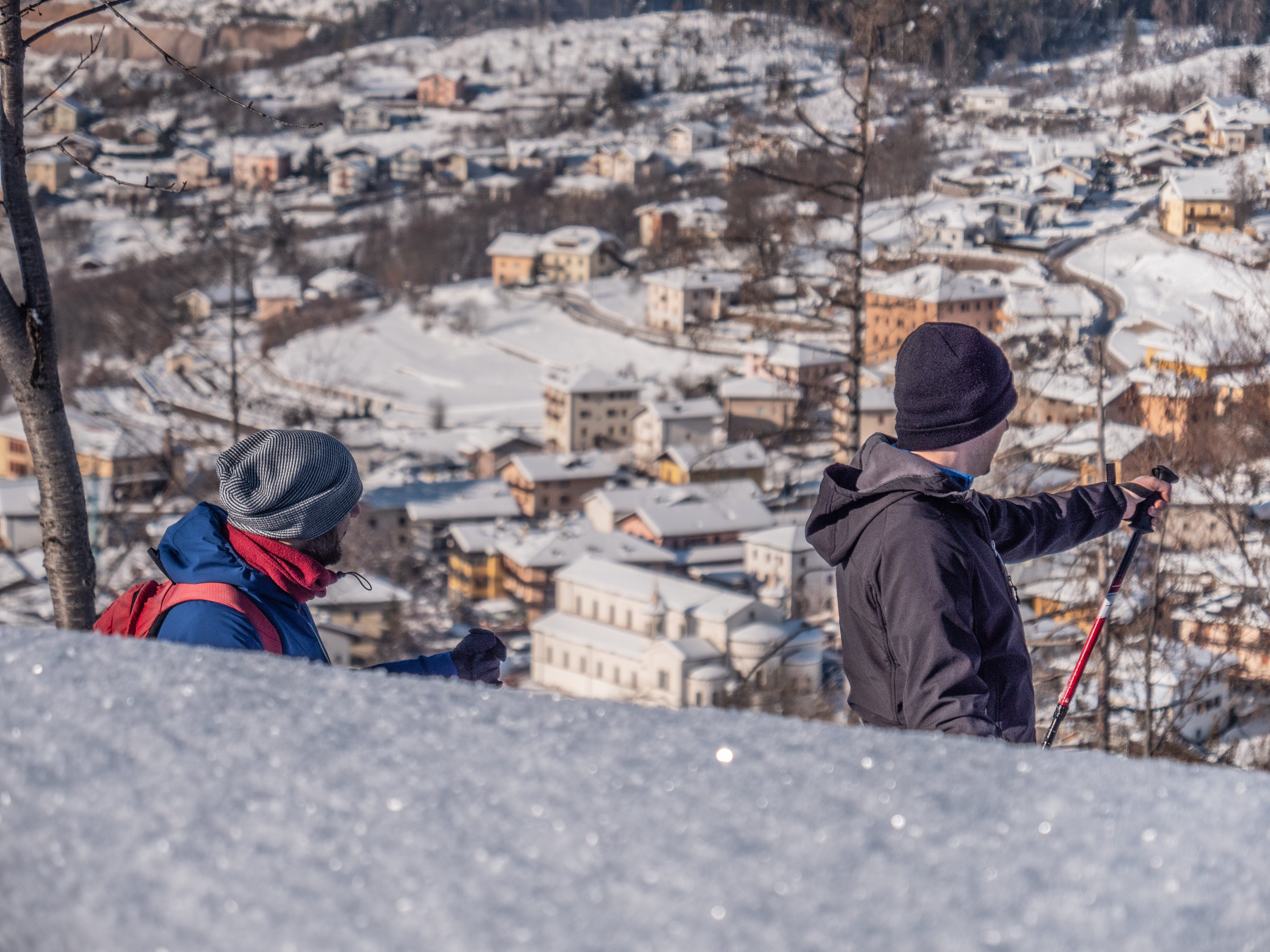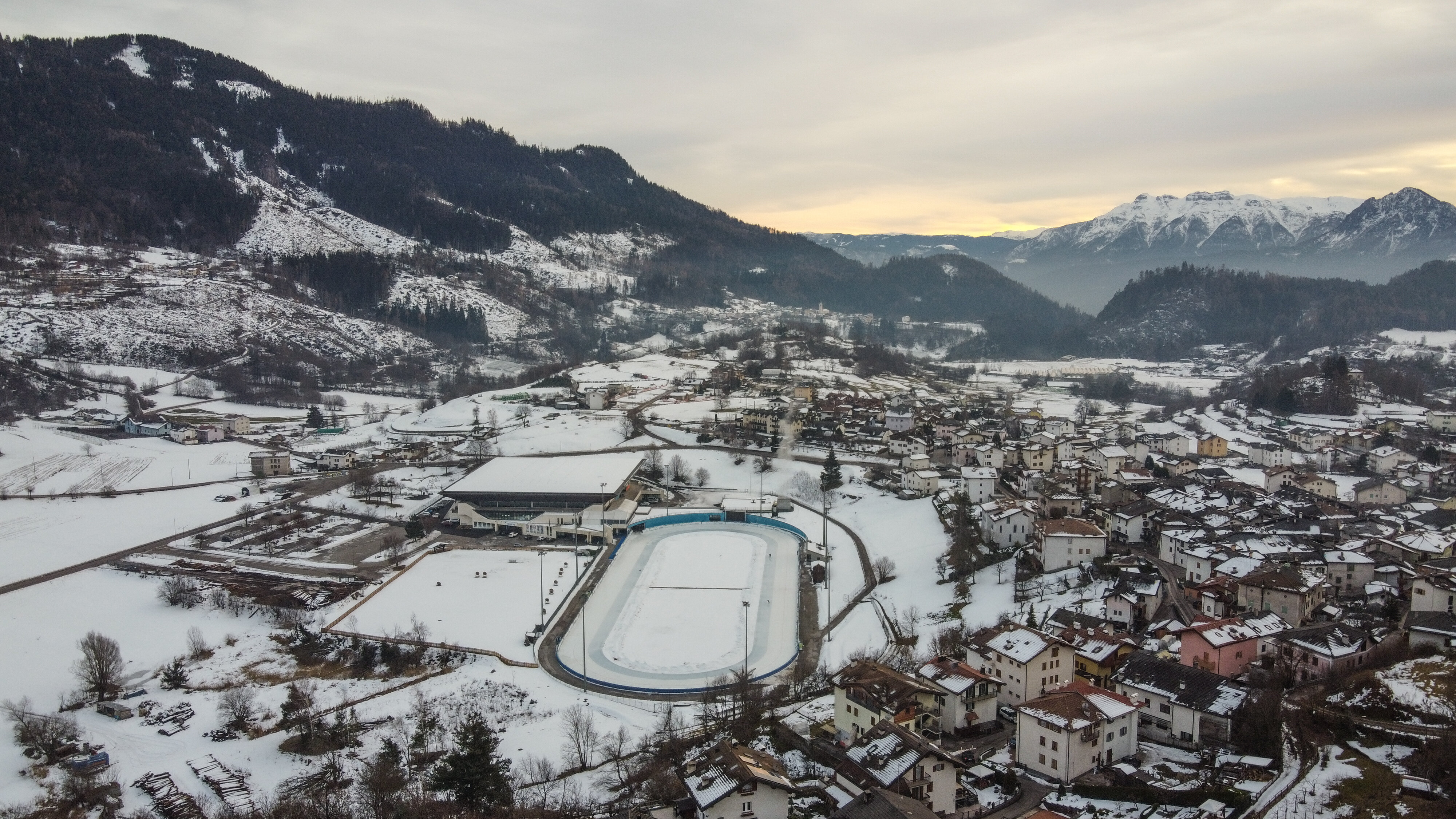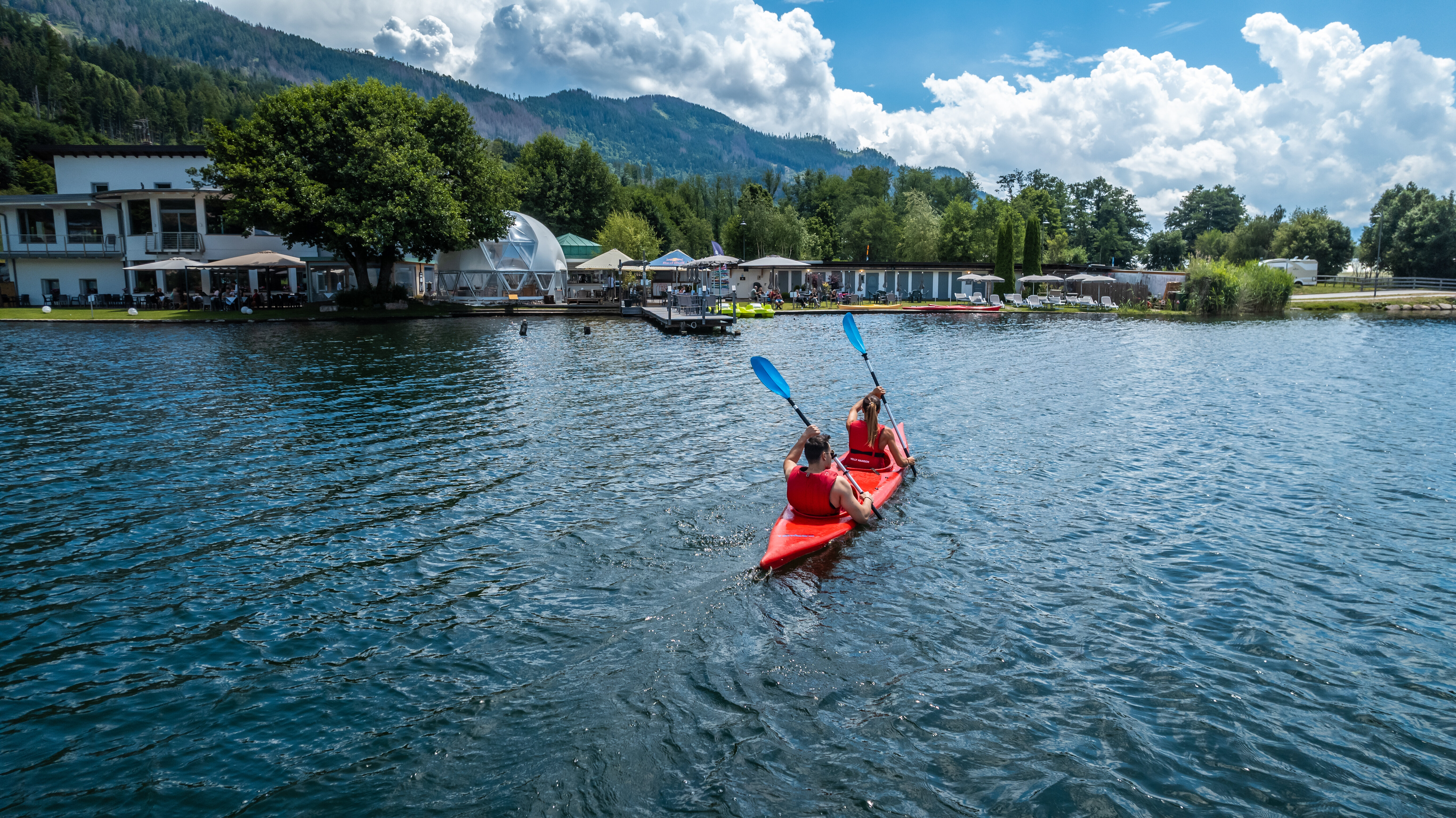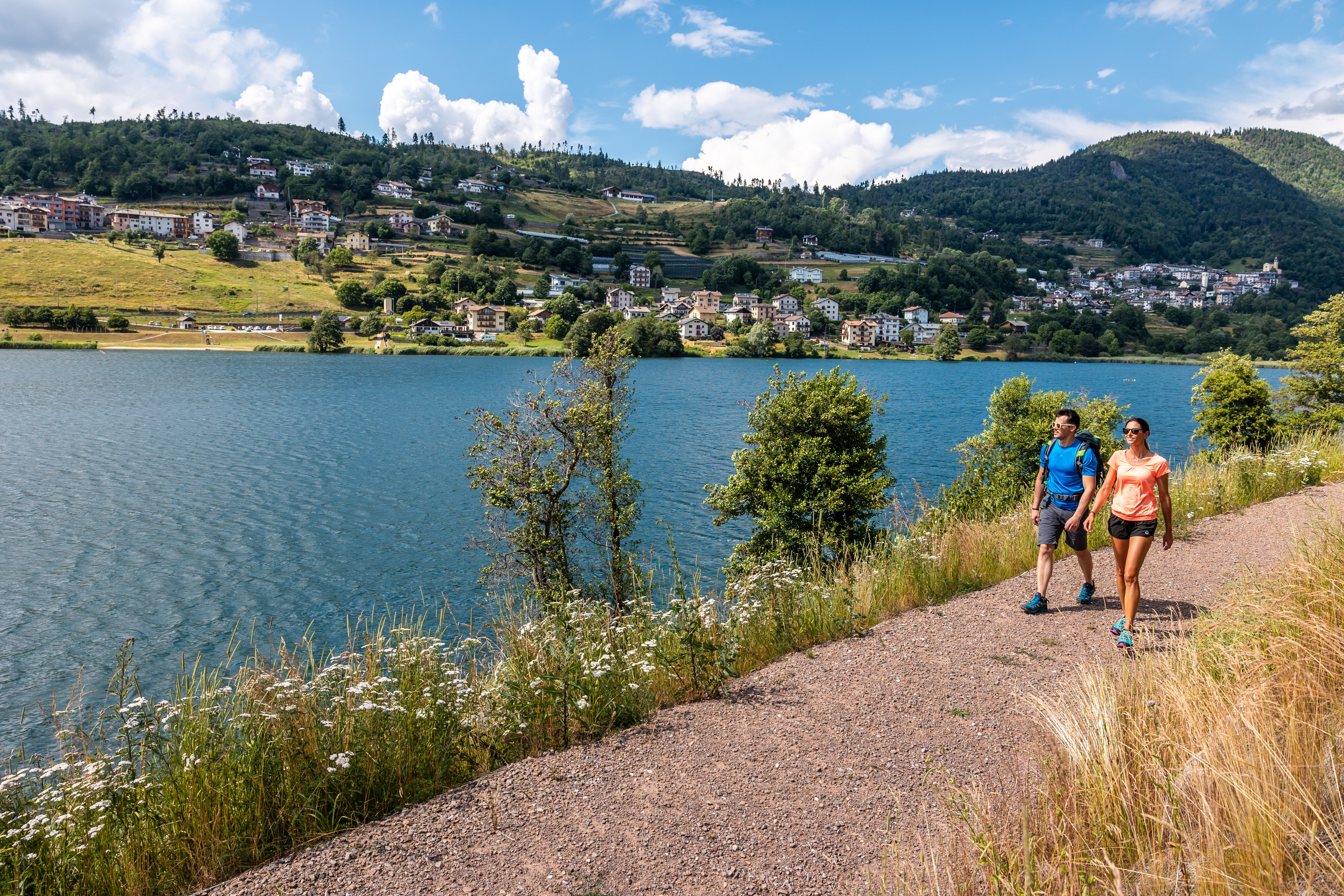Baselga di Piné is the main center of the Piné Plateau and the hub of its tourist and recreational activities. Here, a holiday means not only nature and sport, but also contact with culture, history, and spirituality.
The territory of Baselga di Piné consists of ten hamlets located at an altitude of 967 meters above sea level. The presence of Lake Serraia, the Laghestel biotope, the famous Marian Sanctuary of Montagnaga, modern accommodation facilities, a prestigious Conference Center, and an internationally renowned artificial ice stadium have made it one of the best-known destinations in Trentino, attracting a large number of visitors every year.
Further information
Several churches of great artistic interest stand within the municipality. The oldest is the Church of San Mauro, in the hamlet of the same name, mentioned in a document as early as 1242. It was the first Pieve of the Piné area, rebuilt and reconsecrated several times. Today it appears in Gothic-Renaissance style; contrasting with the simple façade stands an elegant three-bay portico adorned with four red stone columns topped with Corinthian capitals. The Romanesque bell tower has a square plan and ends with a sharp pyramidal spire. Inside, it preserves a fine Baroque wooden altar, a famous Gothic triptych in carved and gilded wood depicting the heresy of the Valentinians, two 16th-century altar paintings by Paolo Naurizio, a 17th-century altarpiece by Carlo Pozzi, and several remarkable 16th-century frescoes.
In Baselga stands the Ancient Parish Church of Santa Maria Assunta, remodeled several times and featuring elements of various styles—from Romanesque to Gothic, Renaissance, and Baroque. It preserves a canvas attributed to Carlo Pozzi and an altarpiece painted in 1595 by Paolo Naurizio. The façade was rebuilt in 1925 and decorated by Wenter Marini and Matteo Sebesta.
Also noteworthy are the 17th-century Church of San Giuseppe, standing alone on the hill of Vigo; the ancient Church of San Rocco in Miola, adjoining the new parish church and consecrated in 1546; and the Church of Sant’Anna in Montagnaga, which preserves the “miraculous” painting of the Madonna of Caravaggio.
